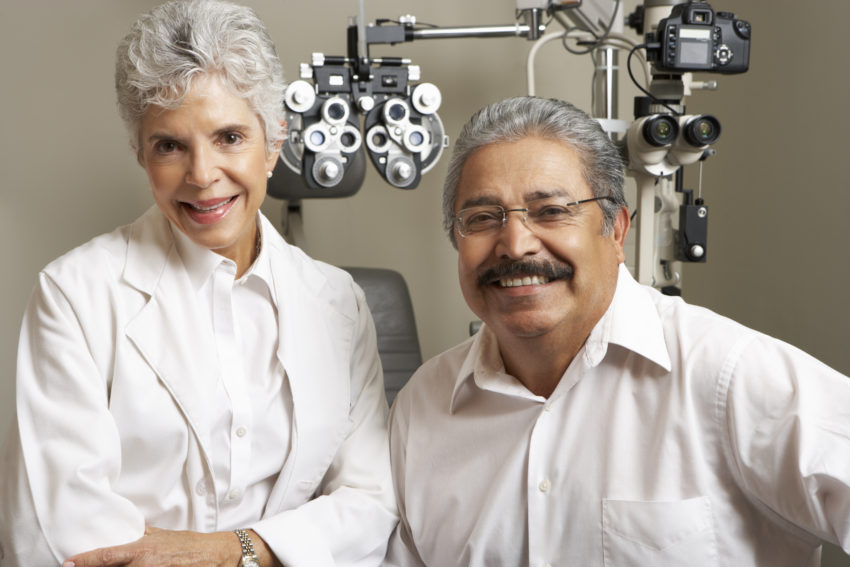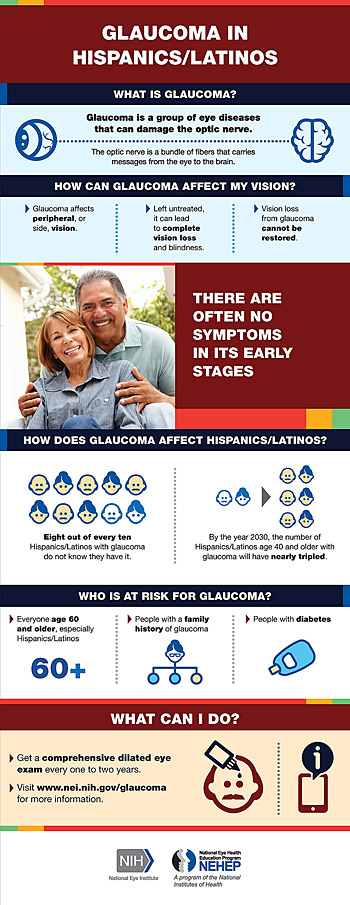
Share On Social!
What’s one of the world’s leading cause of blindness?
Glaucoma—and it’s far more prevalent in Latinos and blacks.
Glaucoma, a gradual eye disease that causes damage to the optic nerve, has few symptoms. Peripheral or side vision begins to worsen without patients realizing it, which enables the disease to progress into later stages, according to the Mount Sinai Health System.
 How can you prevent it (and keep your eyes healthy)?
How can you prevent it (and keep your eyes healthy)?
According to the National Eye Institute (NEI):
- Have a comprehensive dilated eye exam. A dilated eye exam is the only way to detect diseases like glaucoma in their early stages.
- Know your family’s eye health history. It’s important to know if anyone has been diagnosed with a disease or condition since many are hereditary.
- Eat right to protect your sight. Eating a diet rich in fruits and vegetables, particularly dark leafy greens such as spinach, kale, or collard greens is important for keeping your eyes healthy, too.
- Maintain a healthy weight. Being overweight or obese increases your risk of developing diabetes and other systemic conditions, which can lead to vision loss, such as diabetic eye disease or glaucoma.
- Wear protective eyewear. Wear protective eyewear when playing sports or doing activities around the home. Also, sunglasses can help protect your eyes from the sun’s ultraviolet rays.
- Quit smoking or never start. Research has linked smoking to an increased risk of developing age-related macular degeneration, cataract, and optic nerve damage, all of which can lead to blindness.
- Give your eyes a rest. If you spend a lot of time at the computer or focusing on any one thing, you sometimes forget to blink and your eyes can get fatigued. Try the 20-20-20 rule: Every 20 minutes, look away about 20 feet in front of you for 20 seconds.
Medicare covers an annual comprehensive dilated eye exam for some people at high risk for glaucoma, like older Latinos.
“While anyone can get glaucoma, NEI encourages people at higher risk, including African Americans over the age of 40; everyone over the age of 60, especially Mexican Americans; and people with a family history of the disease, to have a dilated eye exam every one to two years,” said NEI director Dr. Paul Sieving.
Find more about glaucoma in English or Spanish from the National Eye Institute (NEI)
Check out the NEI’s new Latino glaucoma infographic in English or Spanish.
Explore More:
Healthcare AccessBy The Numbers
142
Percent
Expected rise in Latino cancer cases in coming years



